Prof Thomas Iskratsch
Dipl.-Ing., PhD, FHEA
News
January 2025 | ||
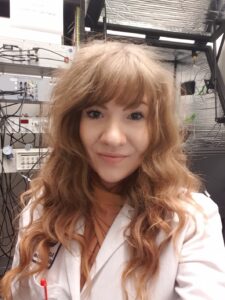 SEMS researcher wins prestigious Postdoctoral Researcher Medal20 January 2025The British Society for Cell Biology’s (BSCB) Postdoctoral Researcher Medal is awarded to one early career researcher who has made a major contribution to cell biology during their training in the UK or Ireland. This year’s winner is Queen Mary’s Dr Pamela Swiatlowska. Dr … [more] | ||
November 2024 | ||
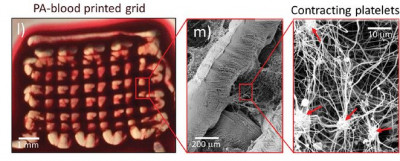 Paper on whole blood based biomaterials published in Advanced Materials18 November 2024Big congratulations to Soraya Lopategui on publishing her PhD work in Advanced Materials. The paper, a team effort with the Alvaro Mata group on "Biocooperative Regenerative Materials by Harnessing Blood-Clotting and Peptide Self-Assembly" exploits non-selective and selective interactions between blood and peptide-amphiphiles to create materials that can be … [more] | ||
 Biomedical Engineering student wins ‘Junior Nobel Prize’13 November 2024Balvinder Dhillon, a fourth year Biomedical Engineering student, has won the Global Award for Engineering at the Global Undergraduate Awards. Nicknamed the 'Junior Nobel Prize’, the Global Undergraduate Awards is the world's leading academic awards programme which recognises top undergraduate work, shares this work with a global audience … [more] | ||
May 2024 | ||
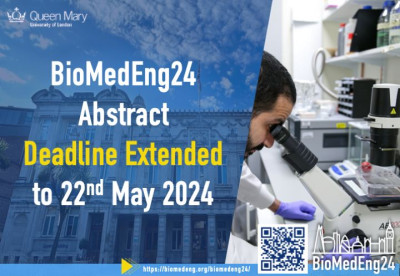 BioMedEng24: Abstract deadline extended to 22nd May1 May 2024BioMedEng24 is pleased to announce an extension to the deadline for abstract submission. New Deadline for Submission: 22nd May 2024 Don't miss your chance to showcase your innovative work at this leading biomedical engineering conference. Ensure you submit your abstract by the new deadline to secure your spot. Please visit: … [more] | ||
March 2024 | ||
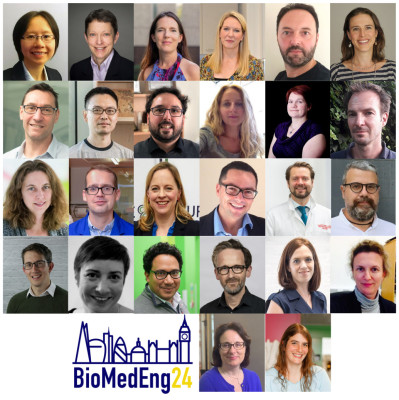 BioMedEng24 Abstract Submission31 March 2024The next Biomedical Engineering Association’s annual conference, BioMedEng24, will be organised by Queen Mary University of London, taking place on 5-6 September 2024. Expect to explore plenary sessions, keynote talks, break-out workshops, poster sessions, dedicated early-career researcher sessions and more. Abstract Submission Leaders from academia, industry, clinicians, early-career researchers … [more] | ||
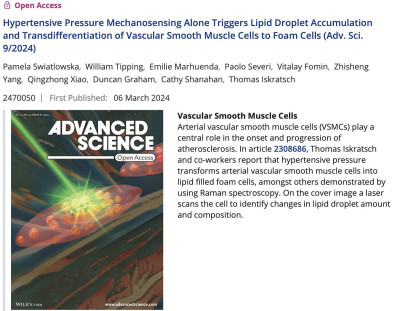 Research featured as cover article in Advanced Science6 March 2024Congratulations to Pamela Swiatlowska and the rest of the team for having the latest article featured as cover article in Advanced Science. The research, Hypertension's Hidden Hand, which you can find out more about in a previous news story, looks at how arterial vascular smooth muscle cells (VSMCs) play … [more] | ||
January 2024 | ||
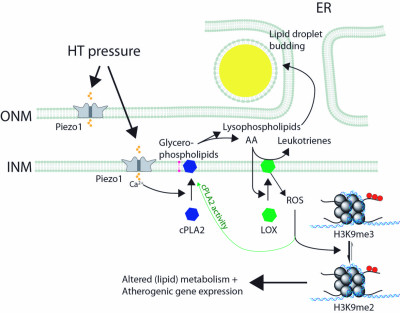 Hypertension's hidden hand: pressure-driven foam cell formation revealed as key driver of arterial disease, paving the way for new therapies3 January 2024A new study in Advanced Science unlocks the secrets of how high blood pressure (hypertension) fuels the progression of arterial disease. Led by Professor Thomas Iskratsch, Professor of Cardiovascular Mechanobiology & Bioengineering at Queen Mary University of London, the research team exposes a novel mechanism by which elevated pressure transforms … [more] | ||
November 2023 | ||
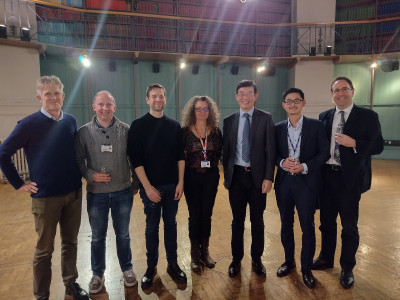 SEMS team recognised at QMUL Academic Promotions Event21 November 2023On 21st November QMUL hosted an event to celebrate the staff who have been promoted in the most recent academic promotion rounds. As we reported back in September, this was a very successful outcome for SEMS with 12 of our colleagues being promoted across all the different academic grades, reflecting the … [more] | ||
September 2023 | ||
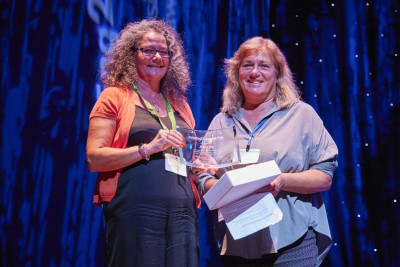 BioMedEng23 Conference Highlights the Pioneering Work of Queen Mary Bioengineering21 September 2023At the recently concluded BioMedEng23 conference, Queen Mary Bioengineering showcased its prowess and contributions to UK Biomedical Engineering. The two-day event, organised by The Association of Biomedical Engineers, Medical Engineers, and Bioengineers (BioMedEng Association), highlighted remarkable advances in and around the UK biomedical sector. Prof Karin Hing Awarded the Prestigious … [more] | ||
June 2023 | ||
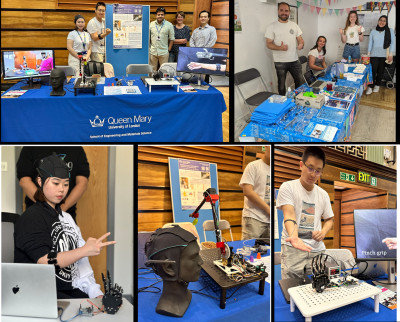 SEMS Bioengineering at Queen Mary's Festival of Communities12 June 2023Cutting-Edge Science and Engineering Research Showcase RoboCare: Innovations in Healthcare and Assisted Living Dr. Thilina Dulantha Lalitharatne’s team showcased RoboCare, illustrating the potential of robotic technologies in healthcare and assisted living. Visitors interacted with assistive robots, Brain-Computer Interfaces (BCIs) and discovered how they can enhance the quality of … [more] | ||
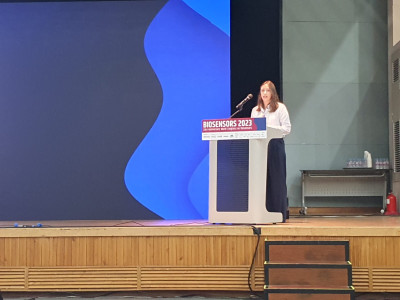 Rachel Jacques presents talk at prestigious World Congress on Biosensors in Busan, South Korea8 June 2023The World Congress on Biosensors is the largest and most well-established conference in the field, attracting approximately a thousand attendees from industry, academia and government organisations worldwide. Rachel presented a talk entitled "Highly sensitive imaging of cardiomyocyte action potentials with LAPS through control of the contact force between organoid … [more] | ||
December 2022 | ||
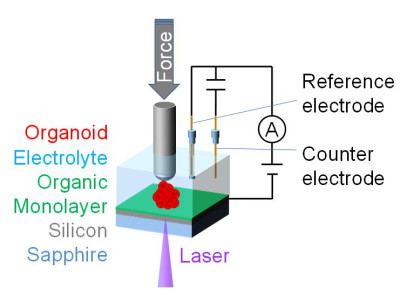 Controlling the contact force between organoid and light-addressable potentiometric sensor enables highly sensitive monitoring of cardiomyocyte action potentials21 December 2022Monitoring of action potentials of beating cardiac cells called cardiomyocytes can give insights into physiological and disease mechanisms and aid the development of novel therapeutics for the treatment of cardiac arrhythmia, i.e., irregular heartbeats. Patch clamp measurements are the gold standard in electrophysiological measurements, but are difficult to operate … [more] | ||
November 2022 | ||
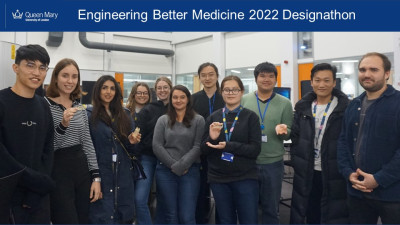 Engineering Better Medicine 2022 PhD cohort compete at QMUL's first 3D printing "designathon"22 November 2022To kickstart their journey at QMUL, the 2022 PhD cohort participated in our first 3D printing designathon. During this one-day event, the Engineering Better Medicine (EBM) cohort training programme, the virtual training program on QM plus, and various facilities and resources were introduced. However, there was more... the main purpose … [more] | ||
July 2022 | ||
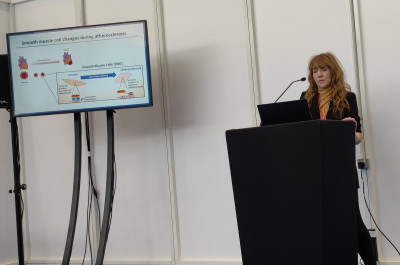 Pamela Swiatlowska shortlisted for Marshall Award and wins travel award for work on vascular smooth muscle cell mechanosensing20 July 2022Pamela Swiatlowska won a travel award to give a talk on her work on vascular smooth muscle cell mechanosensing at the 8th meeting of the invadosome consortium, 4-7 October in Sete, France. She will be also presenting her work at the Annual Meeting of the British Society of&… [more] | ||
April 2022 | ||
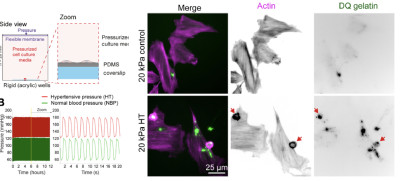 New paper on vascular smooth muscle cell pressure and stiffness sensing is published in Science Advances journal15 April 2022Our paper on vascular smooth muscle cell (VSMC) pressure and stiffness sensing is out in Science Advances. Congratulations to everyone involved and especially Pamela Swiatlowska and Brian Sit who are shared first authors. Our new findings show how the progression of atherosclerosis is affected by … [more] | ||
February 2021 | ||
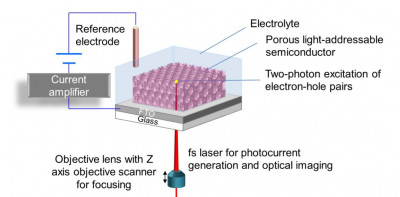 EPSRC New Horizons grant on 3D photoelectrochemical imaging1 February 2021Prof Steffi Krause, Dr Joe Biscoe, Dr Thomas Iskratsch and Dr Bo Zhou have been awarded an EPSRC New Horizon’s grant (EP/V047523/1) of £200k to develop new measurement technology for 3D photoelectrochemical imaging. Electrochemical imaging techniques are powerful tools for the investigation of topography, charge and … [more] | ||
September 2020 | ||
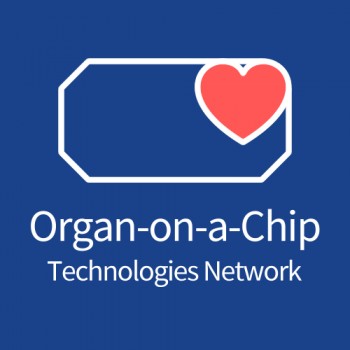 QM hosts new Organ-on-a-chip Research symposia22 September 2020QMUL has launched a new e-symposia series with research presentations related to organ-on-a-chip and other predictive in vitro models. The symposia are part of the UK Organ-on-a-chip Technologies Network which is funded via the Technology Touching Life scheme and directed by Prof Hazel Screen and Prof Martin Knight, both bioengineers … [more] | ||
August 2020 | ||
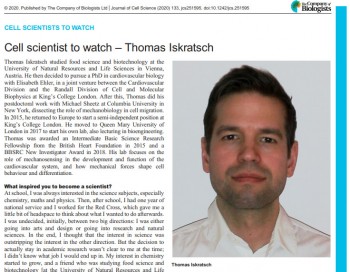 Thomas Iskratsch is featured in the current issue of the Journal of Cell Science as part of the "Cell Scientist to Watch" series.3 August 2020Thomas Iskratsch is featured in the current issue of Journal of Cell Science as part of the "Cell Scientist to Watch" series. The series looks at "cell biologists who are in the earlier stages of their careers, and who [the Journal of Cell Science think] are making … [more] | ||
July 2020 | ||
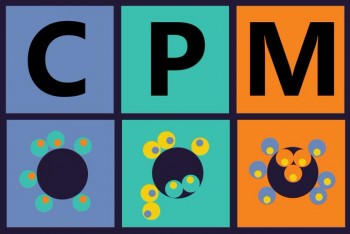 Successful Launch of QMUL Centre for Predictive in vitro Models22 July 2020The Centre for Predictive in vitro Models (CPM) was officially launched on Wednesday 22nd with an successful virtual symposium. More than 330 registrated attendees joined in to celebrate the occasion, listening to talks and participating in stimulating discussions. Introductory words from the vice principal for the faculty of Science and Engineering, … [more] | ||
May 2020 | ||
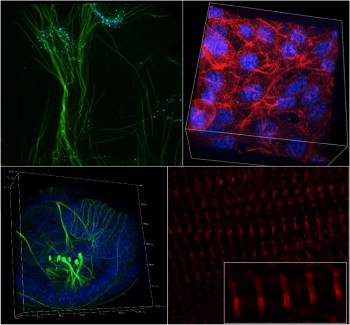 New state-of-the-art microscope to support research in the School of Engineering and Materials Science20 May 2020Queen Mary underlined its strong commitment to the ongoing research in SEMS by investing into a £375K state-of-the-art super-resolution spinning disc microscope. Microscopy imaging approaches have long been a major research strength within the school, facilitating new collaborative links and supporting significant research funding and outputs in leading journals. … [more] | ||
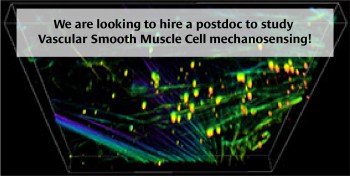 PDRA position available in the lab18 May 2020Applications are invited for a full-time Postdoctoral Research Assistant to investigate mechanical sensing in vascular smooth muscle cells and its involvement in cardiovascular disease. This BHF-funded project follows up on our previous data and will use state of the art mechanobiology and imaging approaches to investigate how vascular smooth muscle … [more] | ||
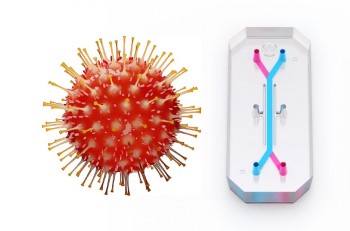 Queen Mary + Emulate Organs-on-Chips Centre supports COVID-19 initiative6 May 2020The Queen Mary + Emulate Organs-on-Chips Centre is supporting a new initiative to use predictive in vitro models, also known as organ-chips, in the fight against COVID-19. Emulate, Inc is participating in the Organs-on-Chips against COVID-19 initiative (#OoCovid) and donating a set of Organ-Chips to the UK Organ-on-a-Chip Technologies Network which … [more] | ||
February 2020 | ||
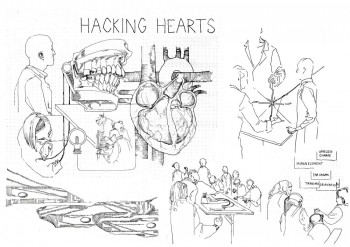 First outcome of our 'Hacking Hearts' art and science outreach collaboration with Central Saint Martins released online19 February 2020Central Saint Martins published a first story about the outcome or our art and science collaboration. This fast-paced project saw postgraduate students from across disciplines hack the research of our inaugural Scientists in Residence over the course of a week. You can read here: https://www.arts.ac.uk/colleges/… [more] | ||
October 2019 | ||
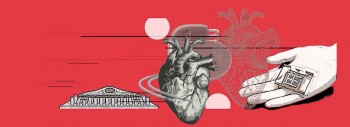 SEMS at 'Hacking Hearts' at Central Saint Martins21 October 2019We're excited to be participating in 'Hacking Hearts' at Central St Martins in London. The event is a ‘Hackathon’, a week-long project re-imagining heart research artistically by Central St Martins Arts Students. Dr Thomas Iskratsch, with help of his group, will be Scientist in Residence. The workshop … [more] | ||
September 2019 | ||
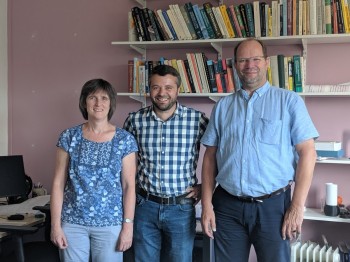 Success for SEMS Academics in 2019 Promotion Round17 September 2019Following the 2019 Promotion Round we are very pleased to announce that eleven members of staff from SEMS have been promoted. This is a fantastic achievement that demonstrates the quality of work undertaken by staff in the School. In particular congratulations to our three new Professors - Julien Gautrot, Steffi Krause … [more] | ||
March 2019 | ||
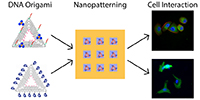 New paper out on using nanopatterning to investigate cardiomyocyte - extracellular matrix interactions!18 March 2019Congratulations to Will and Matt on this exciting proof of concept paper, using DNA origami nanoarrays for cardiomyocyte adhesion studies with single-molecule control | ||
December 2018 | ||
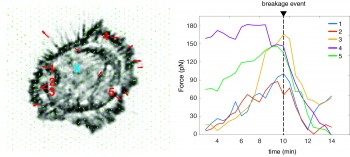 New paper out from collaboration with the Lappalainen Lab!6 December 2018This study shows a surprising role for Calponin-3 in controlling proper contractility of the stress fiber network. Will Hawkes collaborated with the Lappalainen lab and performed nanopillar assays to measure the traction forces that are associated with stress fibers. He could indeed detect higher forces in the knockout cells, as … [more] | ||
October 2018 | ||
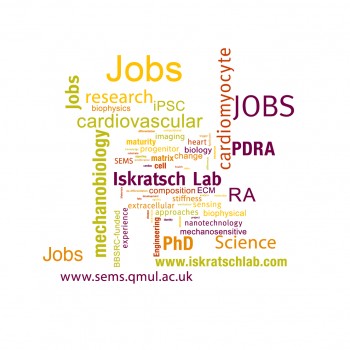 Jobs, Jobs, Jobs!24 October 2018Are you looking for a fully funded PhD studentship, post-doc or research assistant position on cardiomyocyte mechanosensing? We have currently openings on all levels! To apply go to: PDRA: https://webapps2.is.qmul.ac.uk/jobs/job.action?jobID=3766 RA: https://webapps2.is.qmul.ac.uk/jobs/job.action?jobID=3768 … [more] | ||
September 2018 | ||
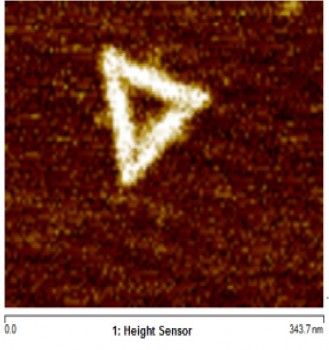 Congratulations to Will for winning the best poster award14 September 2018Many congratulations to Will Hawkes for winning the best poster award at this years BBSRC LIDo retreat! Will presented his exciting research, combining e-beam lithography nanopatterning and DNA origami to investigate receptor ligand interactions and their role in mechanotransduction. [more] | ||
April 2018 | ||
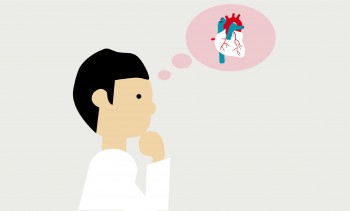 New animation from the British Heart Foundation shows how SEMS research into tiny tech is helping to treat heart failure3 April 2018Heart failure affects an estimated 920,000 people in the UK. It means that your heart can't pump blood as well as it should do. One of the most common causes of heart failure is a heart attack. After a heart attack the damaged heart muscle can become stiff. This means … [more] | ||
January 2018 | ||
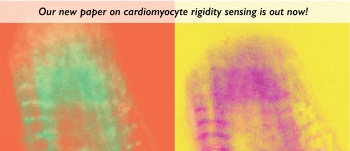 New Published Research: Cells in the heart sense stiffness by measuring contraction forces and resting tension simultaneously26 January 2018Researchers from Queen Mary University of London have identified a new mechanism in which adhesive structures within the cells of the heart sense stiffness through muscle contractions and resting tension at the same time. The study, published in Developmental Cell, further shows that the resting tension in the heart cells … [more] | ||
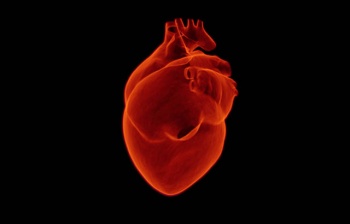 Cells in the heart sense stiffness by measuring contraction forces and resting tension simultaneously26 January 2018Researchers from Queen Mary University of London have identified a new mechanism in which adhesive structures within the cells of the heart sense stiffness through muscle contractions and resting tension at the same time. The study, published in Developmental Cell, further shows that the resting tension in the heart cells … [more] | ||

